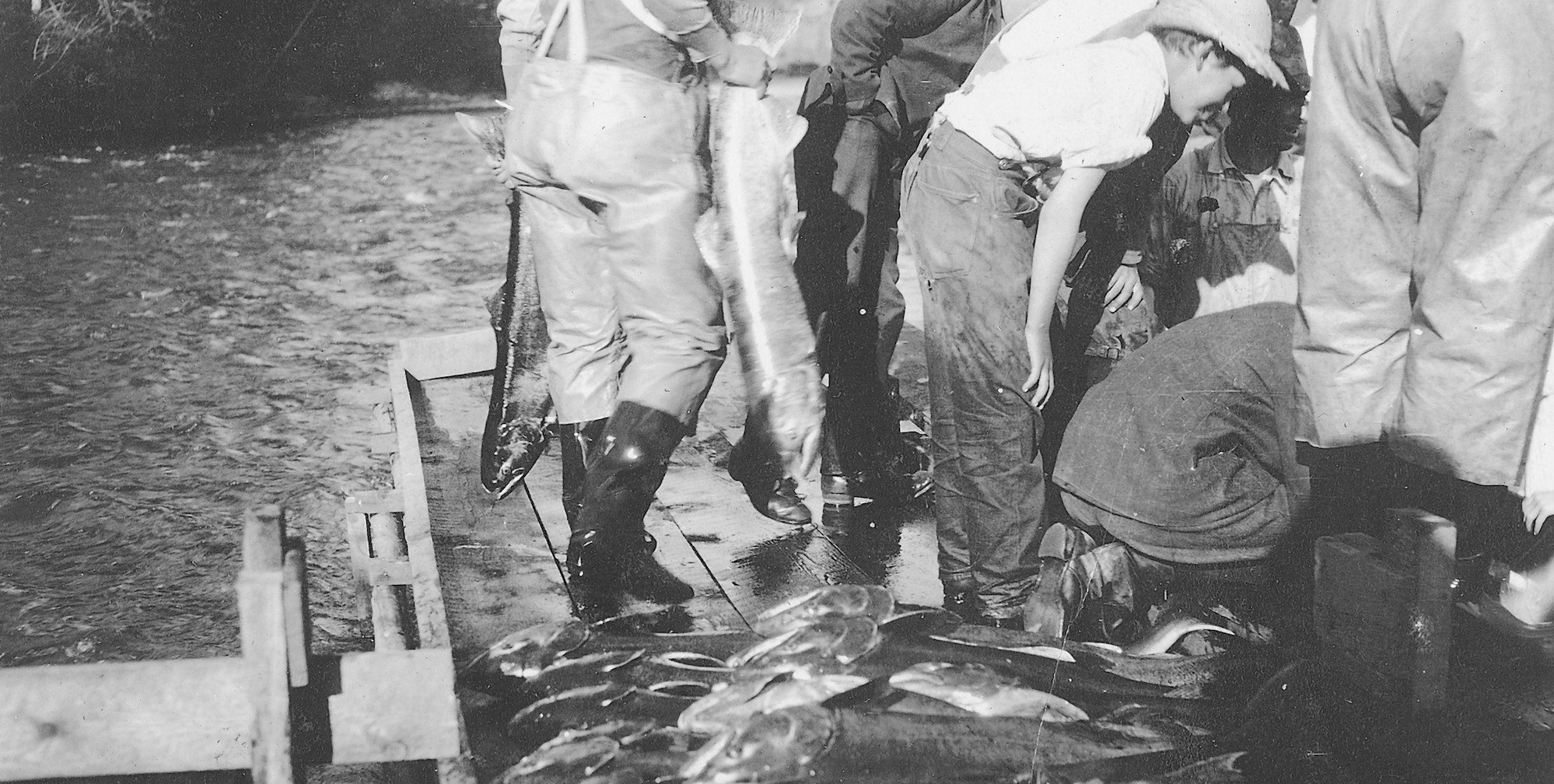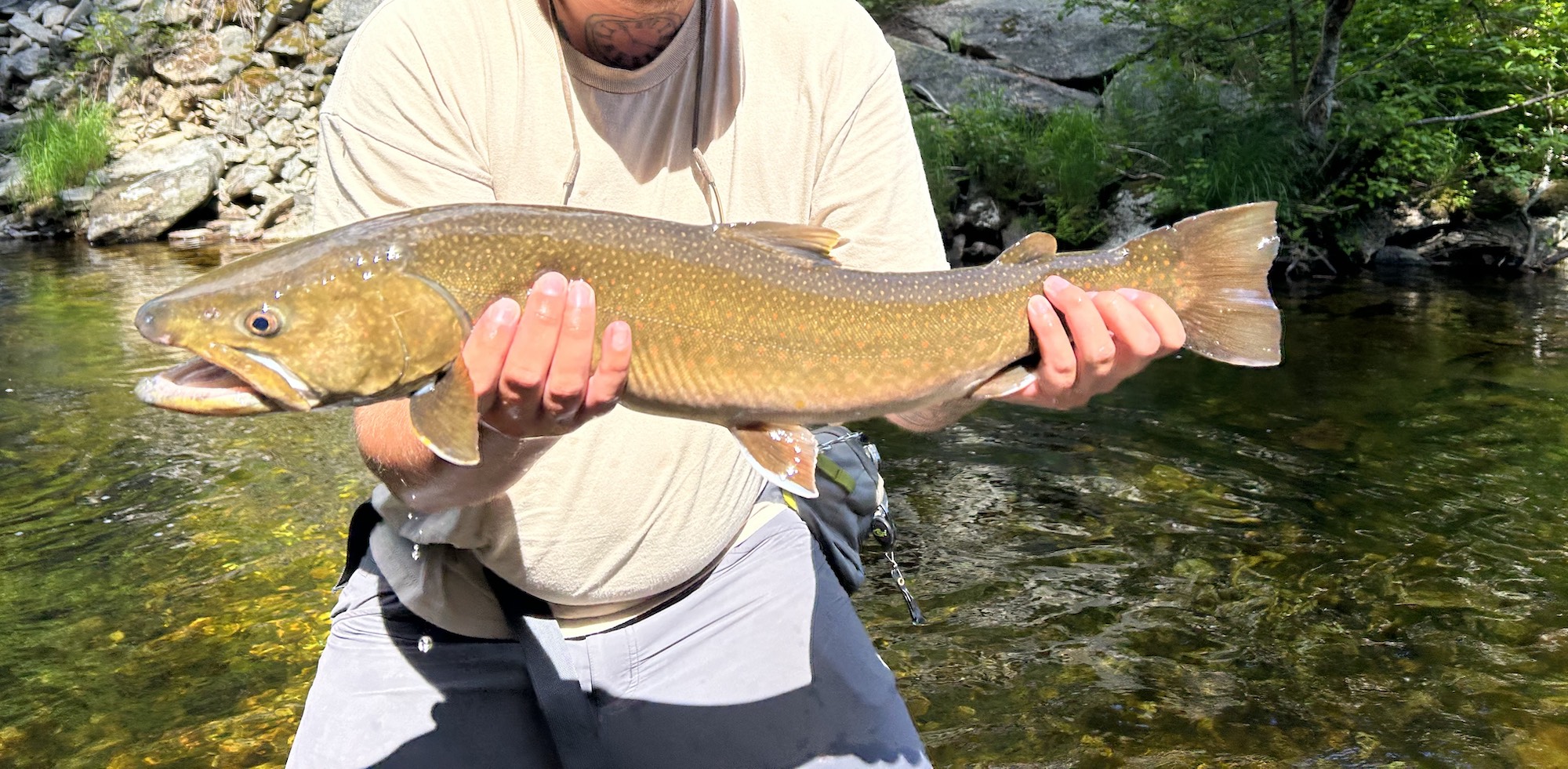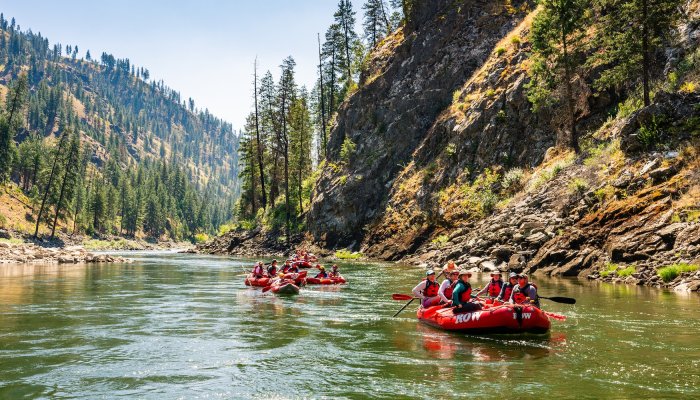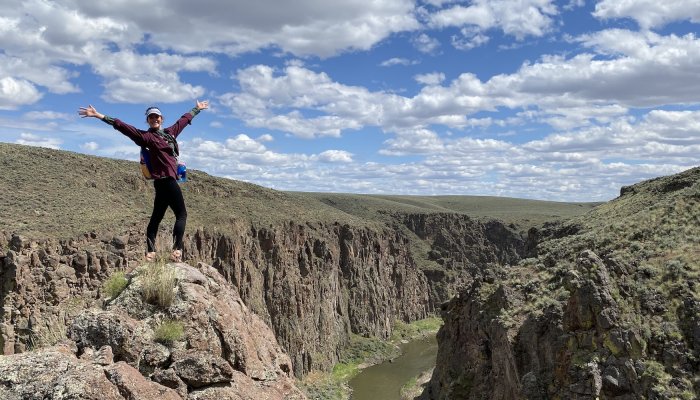Guide to Fly Fishing on the Middle Fork of the Salmon River
Flowing through central Idaho, the Middle Fork of the Salmon River is a pristine wilderness paradise for anglers and nature lovers alike. This wild waterway winds for over 100 miles through the heart of the Frank Church-River of No Return Wilderness, the largest forested wilderness area in the lower 48 states.
As the river tumbles down from alpine headwaters and through rugged canyons, it forms a network of crystal clear pools, riffles, and rapids. These diverse aquatic habitats support healthy populations of wild trout that lure fly fishing enthusiasts and novice anglers from around the world.
But the world-class fishing is only part of the river's appeal. The Middle Fork corridor harbors remarkable biodiversity, providing refuge for bighorn sheep, mule deer, and wild elk, not to mention wolves, wolverines, and mountain lions. Bald eagles and osprey nest in towering snags along the river, while hawks and falcons soar overhead. This is nature at its finest.
When it comes to fly fishing, few destinations can compare to the wild beauty and solitude found along the Middle Fork of the Salmon River. This pristine river boasts a world-class Blue Ribbon trout fishery, surrounded by over two million acres of federally protected land free from roads and development.
From late August through September, adventurous fly fishers can embark on unforgettable catch-and-release trips down the Middle Fork of the Salmon River. Rainbow Trout, native Westslope Cutthroat Trout, and Bull Trout thrive in the cold mountain waters, providing exciting challenges and one-of-a-kind experiences.
ROW Adventures’ Middle Fork fly fishing trips begin in the tiny mountain hamlet of Stanley and cover the entire 106-mile stretch through the Frank Church-River of No Return Wilderness, ending near the confluence with the Main Salmon. With no roads, bridges, or signs of civilization, these wilderness float trips offer a special chance to connect with unspoiled nature.

History of fishing on the Middle Fork
The Middle Fork of the Salmon River has a long and storied history as a pristine wilderness area and world-class trout fishery. The area has changed little since the days of the Tukudeka or Sheepeater Indigenous tribes, who lived off the land in these parts for thousands of years. They survived by hunting bighorn sheep and fishing for the plentiful native trout that still inhabit the waterway.
The abundance of fish populations today is thanks in large part to progressive catch and release regulations that began in the early 1970s. These regulations mandate that all fish caught must be immediately released unharmed back into the river. This allows the fish populations to thrive and provides the opportunity for fishermen to enjoy catching these wild trout year after year.
As a result, anglers come from all over the world to fly fish the Middle Fork and enjoy matching wits with these wary native trout in what is an unspoiled wilderness setting. Today, the Middle Fork is considered one of the top fly fishing destinations in the entire world, yet it retains its wild character just as it was centuries ago.
Fish species found in the Middle Fork of the Salmon River
Two species in particular draw anglers to the Middle Fork of the Salmon River - the native west slope cutthroat trout (Oncorhynchus Clarkii) and the rainbow trout (Oncorhynchus Mykiss). In addition to pure strain west slope cutthroat and rainbow trout, hybrids between the two species are frequently hooked in the Middle Fork as well.
The Westslope Cutthroat Trout
The westslope cutthroat trout found here are unique in that they have adapted over many centuries to thrive in the Middle Fork's high-elevation, fast-flowing waters. These hardy trout spend their early lives in the small tributaries flowing into the Middle Fork, growing accustomed to the cold, rushing currents. Upon reaching adulthood, they migrate downstream into the larger pools of the Middle Fork and Main Salmon Rivers where they overwinter.
As spring arrives and the water temperatures start to warm, an amazing upstream migration occurs - the cutthroat trout leave their winter homes and steadily fight the currents for miles and miles until they return to the upper tributaries of the Middle Fork to spawn.
Many anglers who fish the smaller tributaries of the upper Middle Fork Salmon River catch colorful, 7-8 inch trout that they assume to be rainbows. However, these small, brightly-hued fish are juvenile steelhead trout (Oncorhynchus mykiss irideus) in the early stages of their lifecycle. These immature steelhead hatch in the gravel beds of the cold, clear headwater creeks and spend their first two years maturing in the swift, rocky streams. During this time, they feast on aquatic insects and grow vibrant red stripes down their sides - a trademark of steelhead trout.
After two years of rearing in their natal streams, their bodies undergo an incredible transformation to prepare for the migration downstream to the ocean. Their silver sides camouflage them from predators and their physiology adapts to live in saltwater. Driven by instinct, these transformed fish (now 10-12 inches long) begin the epic journey downstream, eventually reaching the Columbia River and finally the Pacific Ocean.
Chinook Salmon
The other anadromous fish in the river is the Chinook salmon (Oncorhynchus tshawtscha). These large, endangered fish spawn in the Middle Fork headwaters but are rarely seen during their upriver migration. Also known as king salmon, Chinooks can grow to be over three feet long and weigh up to 100 pounds. They hatch in freshwater streams and rivers but spend most of their adult lives in the ocean, only returning to their natal streams to spawn.
Though once abundant in the Pacific Northwest, Chinook populations have declined due to habitat degradation, overfishing, and dams blocking their migration routes. Those found in the Middle Fork of the Salmon River make their way up from the ocean each summer, driven by an ancient instinct to return to their place of their birth to spawn.
Idaho Bull Trout
The Idaho Bull trout (Salvelinus Confluentus), commonly mistaken for a dolly varden trout, is another native species found inhabiting the waters of the Pacific Northwest. This large char species, distinguished by its olive-green back and bright orange and red spots, was once abundant from Alaska down into parts of California. However, due to habitat loss, overfishing, pollution, and competition from non-native species, bull trout populations have dramatically declined over the past century.
By 1998, the species was federally listed as threatened under the Endangered Species Act across the lower 48 states. While still considered threatened, some bull trout populations in the Pacific Northwest do appear to be stabilizing in recent years due to habitat protections and restrictions on fishing. Luring them in the Middle Fork of the Salmon River is an undeniable thrill.

What to expect on ROW’s fly fishing trips
On ROW's Middle Fork fly fishing adventures, anglers experience the thrill of a lifetime as they float down crystal clear waters teeming with trout. The intimate experience of just two or three fishers per raft allows for personalized attention from the expert fishing guides who row each boat. These knowledgeable guides offer invaluable advice, happily assisting with technique improvement for those looking to hone their skills.
The minimal gear load in the fishing rafts (with most of the camping equipment transported ahead in a separate cargo boat) allows our small fishing vessels to glide with ease over the river's glassy surface. This light and maneuverable setup enables anglers to stealthily approach promising holes and riffles where trout lie in wait.
On these trips, seasoned fly fishing enthusiasts frequently land upwards of 30 to 40 fish daily. The respect for sustainability practices ensures the continued health of the fishery, with anglers using artificial flies or lures and single, barbless hooks before carefully releasing their catches.
Compared to our standard rafting trips, our fly fishing adventures take a slower pace. This allows more time to fish and if a certain hole or area is fishing well, we will make several passes through it. If guests are interested, we can also take a short break to visit one of the many rock paintings left by the native peoples that once inhabited the area. Archaeologists have identified over 120 archaeological sites, many with rock art depicting scenes of hunting and gathering.
As late afternoon approaches each day, we make camp, with plenty of time to go for a walk, take a dip, watch for birds, or soak in the day’s last rays of sunshine. The camps are simple but comfortable, with cozy tents, camp chairs, and a central area for gathering around the campfire each night.
On the upper half of the trip, there are several natural hot springs along the river. We’ll stop at a couple of these and usually make camp near one to enjoy soaking under a star-filled sky. In the middle portion of our adventure, the canyon opens into huge valleys, with the river becoming wide and shallow.
During the last two days we enter Impassable Canyon - a narrow, granite-walled gorge of spectacular dimensions that boasts some of the biggest rapids of our journey. Navigating these thrilling rapids with their huge waves and churning holes is an experience you’ll not soon forget and a fitting way to end what is an incredible fly fishing adventure.






